
by royalcrownroofing | Jul 14, 2022 | Emergency Preparations, Hurricane Preparation, Roof Maintenance
It’s getting kind of hot here in the Houston area today, and that’s not unusual since summertime is upon us. While you may have been diligent this spring and cut back branches overhanging your roof, that may not be enough when the hurricane season hits us with its high-velocity winds and pelting rain. Remember Hurricane Harvey, our category four hurricane in August 2017? Roofs were actually blown off and branches from trees ended up everywhere, including in people’s living rooms.
One thing we can’t live without is a roof over our heads—shelter is one of the necessities of life. So, if a wind storm, thunderstorm, hailstorm, or hurricane leaves you with a damaged or leaky roof, you need to take care of it as soon as you can to protect your home and the people living in it. Remember that the longer you wait, the worse the problem becomes.
Hopefully, another Hurricane Harvey won’t happen for another 50 years or so, but if it does, you can call on Royal Crown Roofing to help you out. We were there during Hurricane Harvey to help hundreds of people with roof damage and we’re here now should we have another disaster like that.
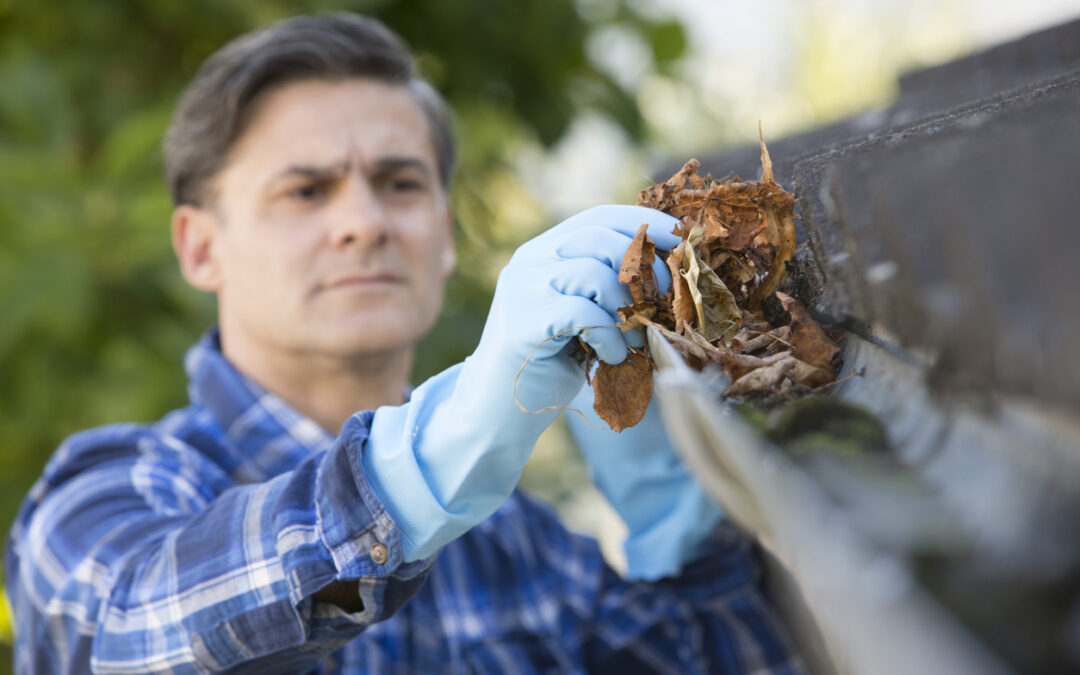
by royalcrownroofing | Jun 28, 2022 | Emergency Preparations, Roof Cleaning, Roof Maintenance, Severe Weather
Gutters are important to take care of before storm season arrives since they do the important job of diverting water away from your house. They funnel rain to downspouts so it stays off the walls of your house and empties into drainage areas away from the foundation and your landscaping.
All of this can’t happen if the gutters are clogged with twigs, leaves, bird nests, dirt, grime, mold, algae, or other debris. They need to be cleared for rain to move quickly and effectively without overflowing into the wrong places.
If you clean the gutters yourself, you can use a scrub brush or power washer on a low setting to wash away the debris. You also need to check out the condition of the hardware attaching the gutters to your roof and make sure they are strong enough to withstand the strong winds and heavy downpours that are coming. It’s also a good idea to install gutter guards, which will prevent debris from being washed through the gutters, into the downspouts, and making a mess on your landscaping below. And check out the downspouts to make sure they are secured properly and are strong enough to do the job.
Finally, if you are not up to all of this ladder climbing and maintenance work on your gutter system, another solution exists. Contact Royal Crown Roofing for their assistance in making sure everything is in good order.
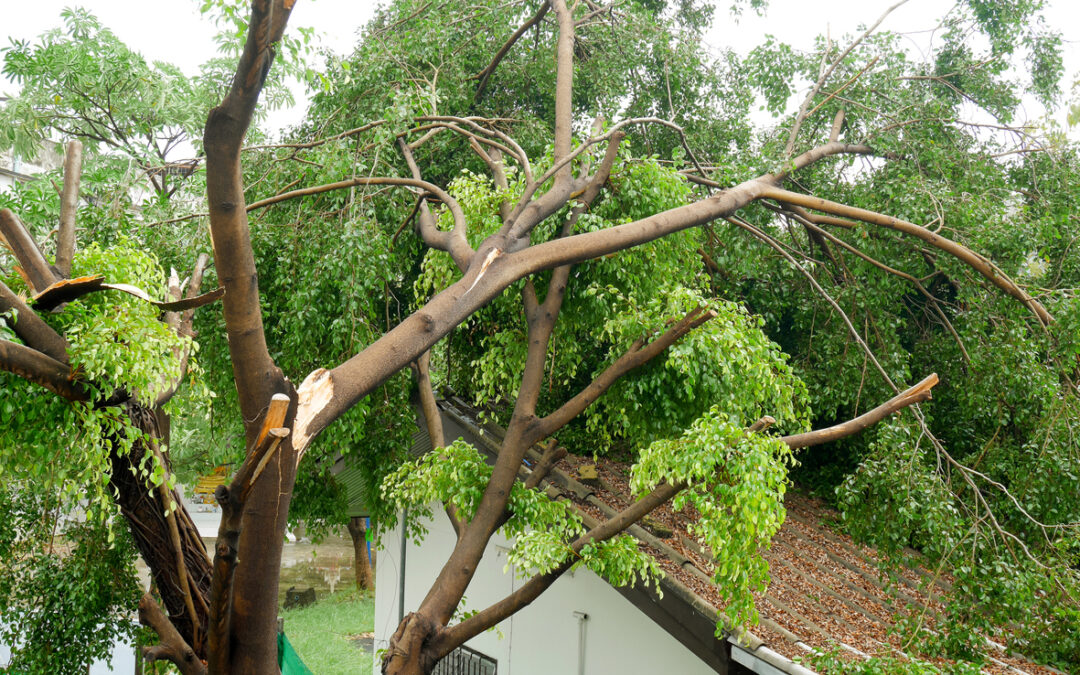
by royalcrownroofing | Jun 14, 2022 | Emergency Preparations, Hurricane Preparation, Roof Inspection, Roof Maintenance
So what happens if some night, the wind blows fiercely, and a branch falls on your roof right over your bedroom, and you expect rain? You might push everything in the room away from the gaping hole in the ceiling and then grab a tarp (if you have one) and cover everything all up—including the bed, so you can’t sleep in it that night, of course. Maybe you get large pans from the kitchen to catch the rain when it comes. You think about climbing up onto the roof to try to cover the hole, but you wisely rule that out.
All kinds of emergencies come to us throughout life and we aren’t always prepared or able to take care of what needs to be done. A fire, a tornado, a hurricane, a windstorm that knocks branches or even a tree on your house can each cause immense damage, costing thousands of dollars.
What you need is someone to show up as quickly as possible to take care of the problem. Contact Royal Crown Roofing to come to the rescue the first thing the next morning. Their experienced team will inspect the damage–at no charge–and come up with a plan to repair it.
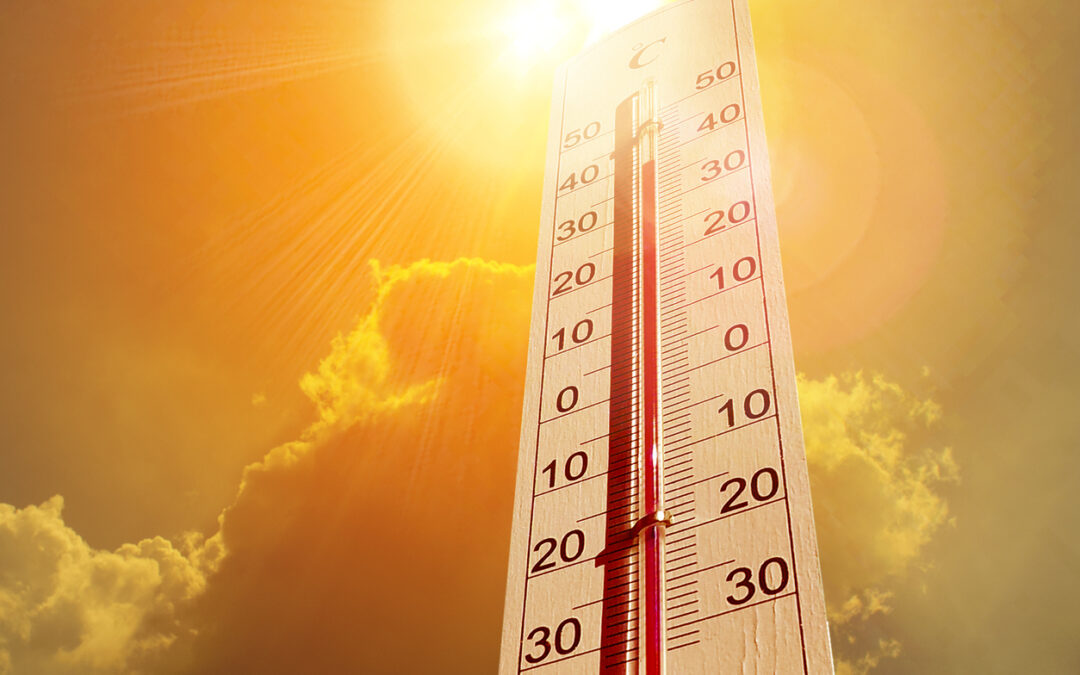
by royalcrownroofing | Jun 7, 2022 | Emergency Preparations, Roof Inspection, Roof Maintenance
Your roof may be the key to a comfortable summer when the triple-digit heat is upon us. When the sun’s ultraviolet (UV) rays beat down on our homes and heat builds up in our roofs and attics, lasting damage can be done and it may not be apparent until it’s extensive.
Unless you have lots of shade trees around your home, your roof is unprotected from the intense heat. When the temperature gauge says the temperature is over a hundred degrees, your roof’s temperature is significantly higher—maybe up to 30 to 40 degrees higher. Imagine what that does to your comfortable home, when the roof weakens and no longer protects you from the heat. Your energy bill will skyrocket.
If the roof is reaching the end of its life—10 to 15 years in our climate—you won’t keep cool no matter how much you spend on air conditioning. Because of these high temperatures, high humidity, and the sun’s UV rays, our Houston roofs show damage much more quickly than more moderate parts of the USA. That means a shorter lifespan and more frequent replacement.
You need a free inspection! Royal Crown Roofing’s experts wait to hear from you and will schedule an appointment to evaluate the condition of your roof and determine where to go from there.
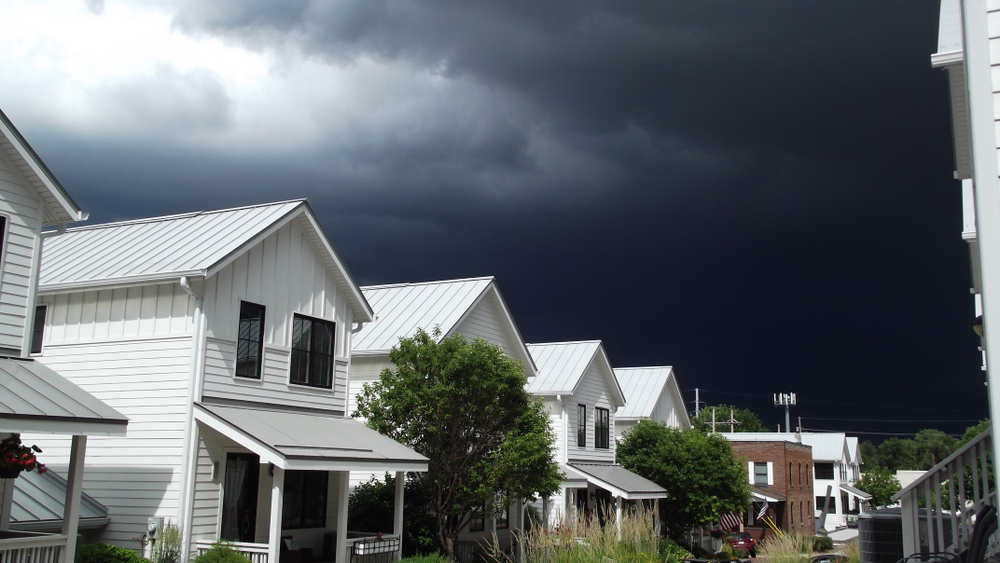
by siteadmin | May 15, 2020 | Emergency Preparations, Roof Damage, Severe Weather
Summer is approaching, and with it, the severe summer thunderstorms Texas is famous for. Thunderstorms on their own are nothing new and not really cause for alarm. However, late spring and early summer tends to be peak season for tornadoes in the south. Even severe storms that don’t produce tornadoes can damage your house. Are you ready for the upcoming summer storms?
Weather forecasts can tell you when a storm will likely arrive and the speed of its winds, but they can’t accurately predict what severe weather could do to your home. Consequently, it’s always an excellent plan to stay prepared for severe weather throughout the entire summer season. Here’s how to get ready.
Home Maintenance
First things first: is your roof leaking? Are there any weak spots that a thunderstorm might damage even further? Go outside and look for missing or broken shingles, then inspect the roof interior for dark or damp spots that indicate a leak. A leaky roof is the last thing you need in a severe thunderstorm! Schedule an emergency roof repair or cover the leaks temporarily until you can get a professional to patch up the roof.
Emergency Supplies
As the saying goes, hope for the best, plan for the worst. If you’re stuck in your house with flooded streets and no electricity, would you be able to hold out for a while? Make sure you can! Stock up on shelf-stable food, bottled water, basic hygiene supplies, medicine, and more to build an emergency kit for yourself and your family. (Find a more comprehensive list of emergency supplies here.) Determine what your family needs and how much of it to stay safe in your house for a while if necessary.
Backup Plan
Most summer storms are ultimately harmless, causing minimal damage to your home or neighborhood. However, dangerous weather like hurricanes can be truly devastating. Don’t risk it if your home is in the path of a hurricane or tornado. As long as it’s safe to travel, evacuate while you can. Plan ahead on how you’ll leave, when you’ll evacuate, what you’ll take along, where you’ll go, and more with your family ahead of time. Don’t be caught off guard with severe weather.
Pro Tip: Before you evacuate to escape a severe storm, unplug your home’s electricity, water, and gas lines. Any of these rupturing during a storm can cause further damage.
Weathering the Storm
Most summer thunderstorms won’t cause significant damage to your home. Likewise, it’s unlikely you’ll have to evacuate unless a hurricane or tornado forms. But even a mild thunderstorm could temporarily knock out your power or flood the streets enough to make driving unsafe. It’s always an excellent idea to be prepared for anything during the stormy summer season.
Join the conversation for more tips on planning for bad weather.
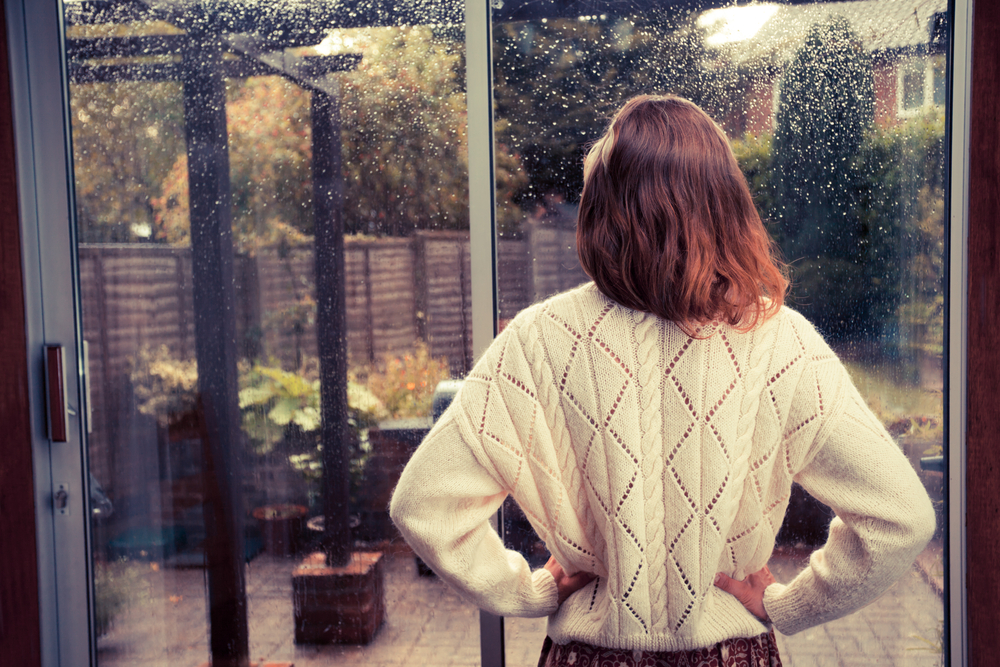
by siteadmin | Dec 6, 2019 | Emergency Preparations, Hurricane Preparation, Severe Weather
The weather alerts are scrolling across your phone and people are scrambling to the grocery store to stock up on food. It’s important to know how to prepare your home for severe weather to prevent unnecessary damage. When the storm hits, are you and your family going to be ready?
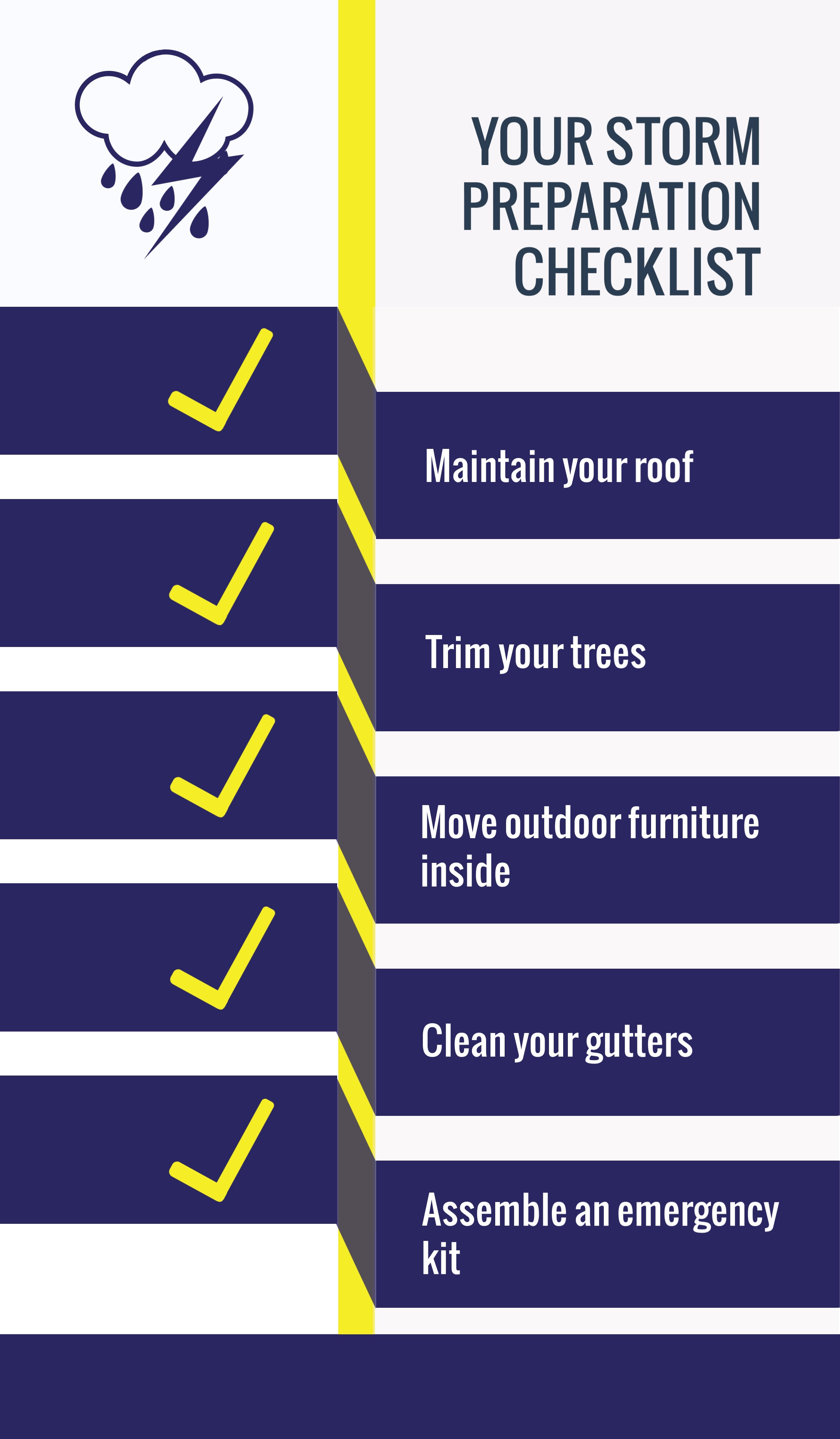
Your Storm Preparation Checklist
According to a recent survey from an insurance company, 75% of homeowners don’t prepare their homes for incoming storms. Unfortunately, neglecting the maintenance of your home can result in costly damages and unnecessary repairs. If severe weather is headed your way, be sure to keep this storm preparation checklist close at hand.
- Maintain your roof
- Trim your trees
- Move outdoor furniture inside
- Clean your gutters
- Assemble an emergency kit
1) Maintain your roof
Have you checked your roof for leaks? Are there any shingles missing? The roof of your home is one of the most protective features of your home. If a natural disaster or heavy rainstorm is headed your way, inspect your roof for any damages or weak points.
2) Trim your trees
When a storm is headed your way, don’t forget to look up. Heavy rain and wind can break tree limbs and send falling debris to your home. In the days leading up to the storm, trim your trees and remove any dead plants from the yard.
Pro Tip: Unfortunately, dead trees or plants can cause just as much harm since they’re more susceptible to being pulled out by their roots and damaging your lawn
3) Move outdoor furniture inside
Between the chance of hailstorms or strong wind, your belongings outside of your home will undoubtedly be affected. Be sure to move all outdoor furniture, playground toys, and loose equipment inside your garage or shed. It might require a little effort to move everything, but the members of your family will be thankful their personal items are kept safe.
4) Clean your gutters
The gutter system on your home was designed to minimize flooding and to protect your roof. However, if it’s clogged with falling leaves and branches, it will hardly have a chance to work correctly. To protect your home, clean your gutters and double-check that rainwater will be able to flow freely.
5) Assemble an emergency kit
If the electricity was turned off and the roads were closed, would your family be prepared to stay in your home? No matter how severe the storm is, it’s important to have a basic emergency kit to ensure the safety of both your home and family. In addition to an emergency supply of food, we recommend gathering a flashlight, batteries, candles, and any other items that will help in the time of a power outage.
Stay Alert and Plan Ahead
If you know a storm is headed your way, it’s a good idea to make sure you and your family will be safe in your home. It’s important to heed warnings and severe weather alerts from your local meteorologist. If you’re asked to evacuate or take shelter outside of your home, preparing your house ahead of time will help prevent damages or future repairs.
Do you need to get your house ready for an incoming storm? Connect with one of our technicians to schedule a service appointment!










